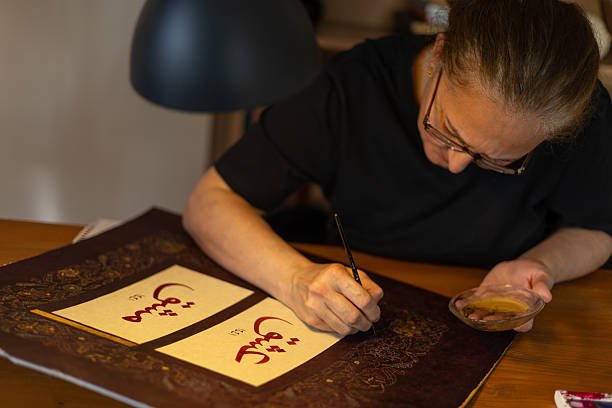Arabic calligraphy is not just a form of writing; it is a rich art form deeply rooted in the history and culture of the Arab world. Its intricate designs, flowing lines, and spiritual symbolism have captivated people for centuries. As a means of aesthetic expression and communication, Arabic calligraphy is revered worldwide for its beauty, precision, and deep cultural significance.

Origins of Arabic Calligraphy
Arabic calligraphy emerged with the rise of Islam in the 7th century. Since the Quran was revealed in Arabic, Muslims have placed great importance on writing the divine word with elegance and precision. Over time, calligraphy became a central element of Islamic art, appearing in mosques, manuscripts, and decorative objects.
Main Styles of Arabic Calligraphy
Several classical styles have developed over the centuries, each with its own unique beauty:
1. Kufic
- One of the oldest forms, known for its angular, geometric letters.
- Used in early Quranic manuscripts and architectural inscriptions.
2. Naskh
- A more fluid and readable script, often used in printing the Quran.
- Characterized by rounded letters and clean spacing.
3. Thuluth
- Elegant and ornate, commonly seen in mosque decorations.
- Known for its long, curved verticals and intricate flourishes.
4. Diwani
- Developed during the Ottoman Empire, characterized by its flowing, interlocking letters.
- Often used in royal decrees and official documents.
5. Modern and Contemporary Calligraphy
Today, artists blend traditional techniques with modern styles, creating abstract and experimental works while preserving the essence of Arabic script.
Why Arabic Calligraphy Remains Popular
- Spiritual Significance – Many Muslims believe that writing verses from the Quran in calligraphy carries blessings.
- Cultural Pride – It preserves the richness of Arabic heritage.
- Universal Appeal – Even non-Arabic speakers appreciate its artistic beauty.
Conclusion
Arabic calligraphy is a living art that bridges the past and present. Whether in holy scriptures, modern design, or digital art, its elegance continues to captivate the world. By exploring this art form, we not only appreciate its beauty but also connect with a rich cultural legacy.
